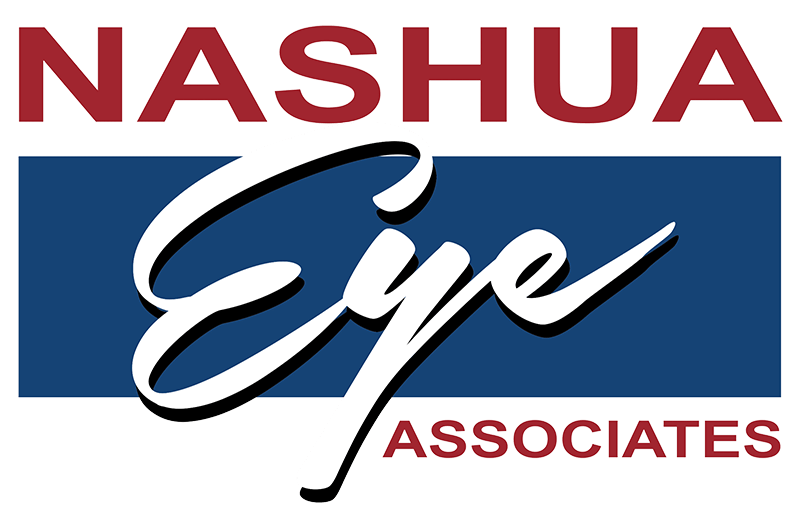Home » Services » Glaucoma
Glaucoma
Glaucoma Care with Experienced Specialists
Nashua Eye Associates provides comprehensive glaucoma care, offering the latest diagnostic tools, medical therapies, and surgical solutions. Our team includes Dr. Sonalee Desai-Bartoli, Dr. Faith Birnbaum, and Dr. Laura Voicu, who are sub-specialty trained in the medical and surgical management of glaucoma, including advanced cases. Together, they are committed to preserving and protecting your vision.
What is Glaucoma?
Glaucoma is one of the leading causes of vision loss worldwide. It is often referred to as the “silent thief of sight” because, in most cases, it has no symptoms until the disease has progressed significantly and irreversible vision loss has occurred. This underscores the importance of regular eye exams, especially for older adults and individuals at higher risk.
There are two primary types of glaucoma:
Angle-Closure Glaucoma
This type can occur at any age and is usually accompanied by sudden symptoms such as eye pain, redness, nausea, and blurry vision.
Progressive Open-Angle Glaucoma
The most common type, typically affecting older adults. Risk factors include elevated intraocular pressure, a family history of glaucoma, thin corneal tissue, and characteristic changes in the optic nerve. It initially damages peripheral vision and, if untreated, can lead to blindness.
Understanding MIGS and SLT for Glaucoma Management
At Nashua Eye, we are dedicated to helping you protect your vision and maintain a high quality of life. If you’ve been diagnosed with glaucoma, you may feel concerned about the condition and how it might affect you. The good news is that advancements in eye care have provided us with effective, minimally invasive treatments to manage glaucoma and prevent further vision loss. Two leading options we offer are Minimally Invasive Glaucoma Surgery (MIGS) and Selective Laser Trabeculoplasty (SLT).
Which Option Is Right for You?
The best treatment for your glaucoma depends on several factors, including your stage of glaucoma, current IOP, and overall eye health. Some patients may benefit from starting with SLT as a first-line treatment, while others may need the more long-lasting effects of MIGS. For advanced glaucoma, we also provide traditional glaucoma surgeries like trabeculectomy and tube shunts. At Nashua Eye, we work closely with you to determine the best course of action based on your unique needs.
Screening for Glaucoma: Tonometry
Tonometry measures the fluid pressure inside your eye (intraocular pressure). This test helps your eye doctor detect glaucoma, a disease that damages the optic nerve. Several methods to measure intraocular pressure are available, including:
Applanation Tonometry
This test measures the amount of force needed to temporarily flatten a part of your cornea. You’ll be given eyedrops with fluorescein, the same dye used in a regular slit-lamp examination. You’ll also receive eyedrops containing an anesthetic. Using the slit lamp, your doctor moves the tonometer to touch your cornea and determine the eye pressure. Because your eye is numbed, the test doesn’t hurt
Noncontact Tonometry
This method uses a puff of air to estimate the pressure in your eye. No instruments touch your eye, so you won’t need an anesthetic. You’ll feel a momentary pulse of air on your eye, which can be startling.
If your eye pressure is higher than average or your optic nerve looks unusual, your doctor may use a pachymeter. This instrument uses sound waves to measure the thickness of your cornea. The most common way of measuring corneal thickness is to put an anesthetic drop in your eye, then place a small probe in contact with the front surface of the eye. The measurement takes seconds.
You may need more-specialized tests, depending on your age, medical history and risk of developing eye disease.
Schedule Your Glaucoma Consultation
Glaucoma treatment at Nashua Eye Associates is tailored to each patient’s unique needs. From medicated drops and laser treatments like SLT to advanced surgical options, our goal is to lower intraocular pressure and preserve your vision for years to come.
If you are at risk for glaucoma or have been diagnosed with the condition, schedule an appointment today to explore your treatment options with our expert team.
Glaucoma Articles
One: The iStent Inject was FDA approved to treat glaucoma in 2018. The Inject device is an evolution of the iStent which was approved in 2012. The pioneering iStent has been placed in more than 400,000 eyes worldwide. The device lowers eye pressure to treat glaucoma. The iStent inject by-passes the trabecular meshwork, or the eye’s drain, to allow for…
During her day job, Nashua Eye ophthalmic technician Regina DeMatteo carefully checks eye pressures and examimes the pupils of glaucoma patients. During her free time, she runs up and down mountains, competing in Spartan endurance obstacle races. Obstacles include crawling beneath barbed wire, swimming, and lugging sand bags, water buckets, and logs. Regina has completed Spartan Races in Pennsylvania and…





